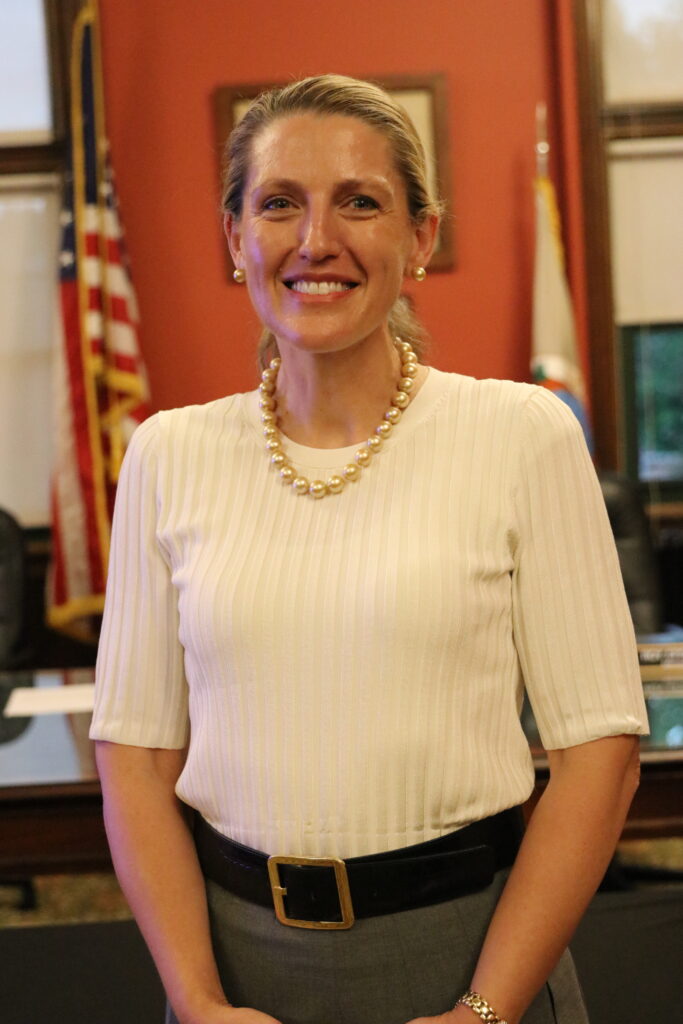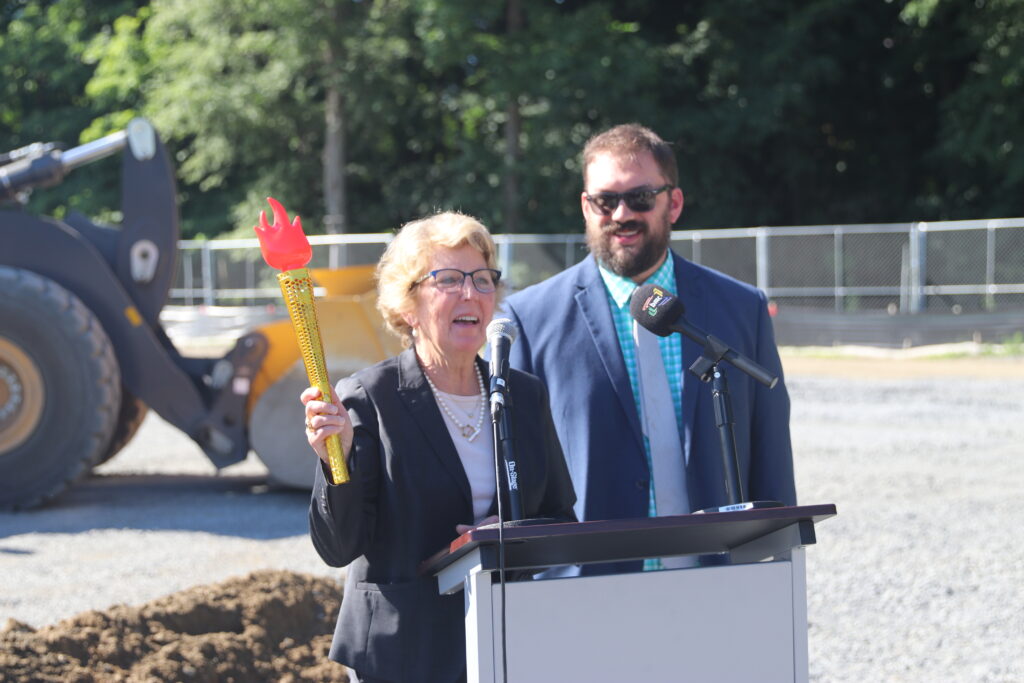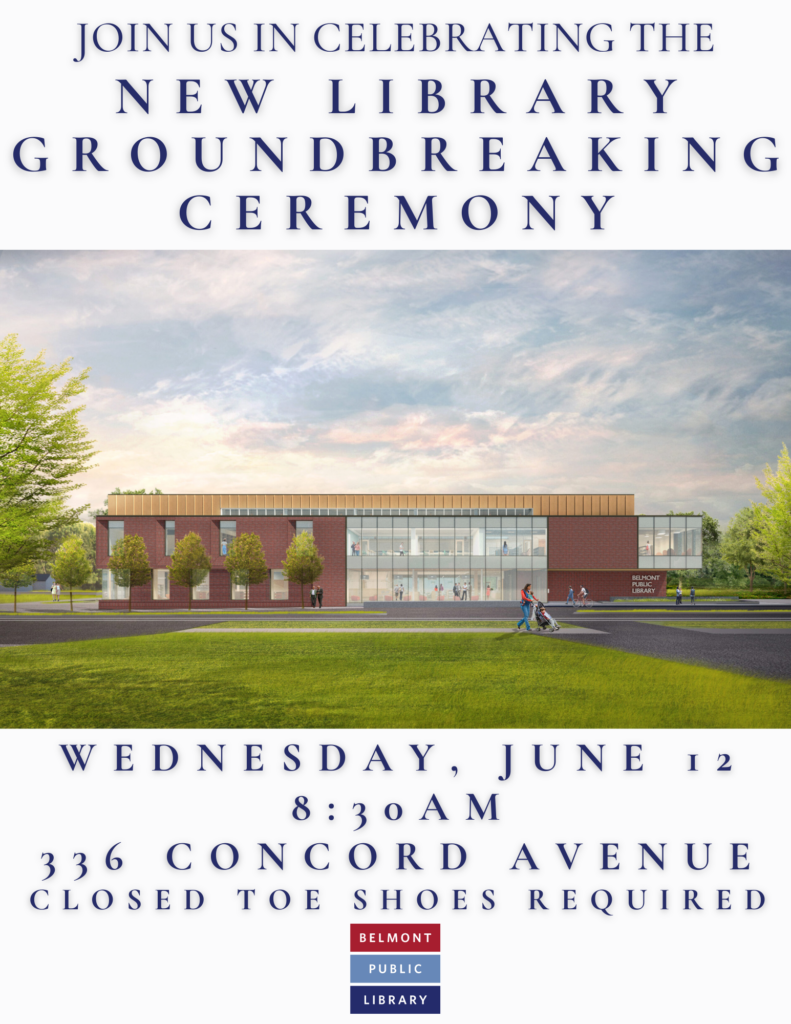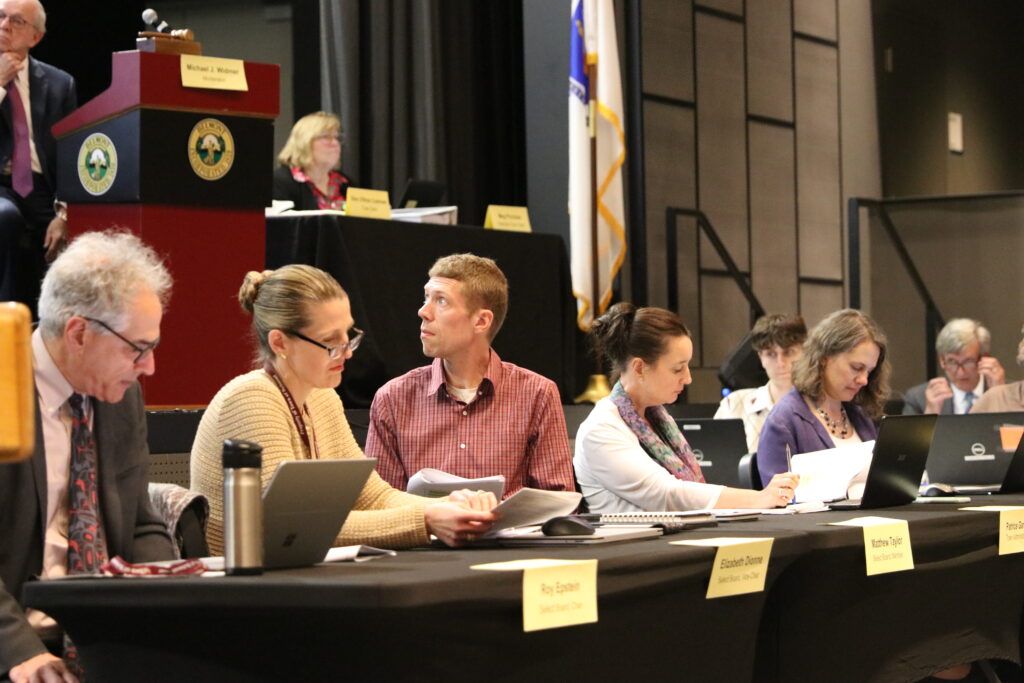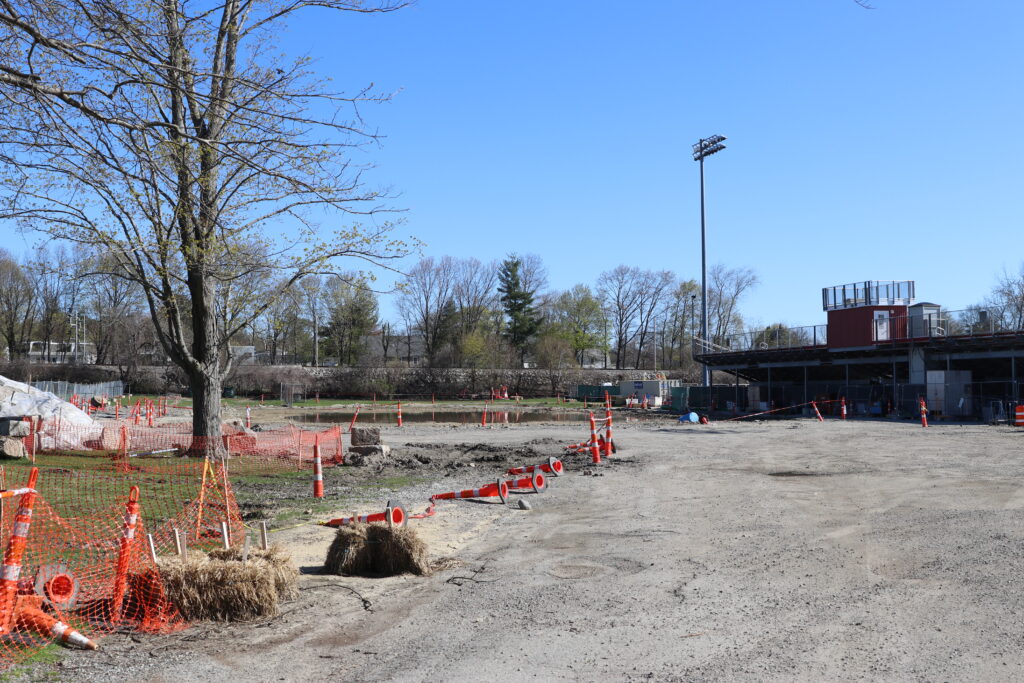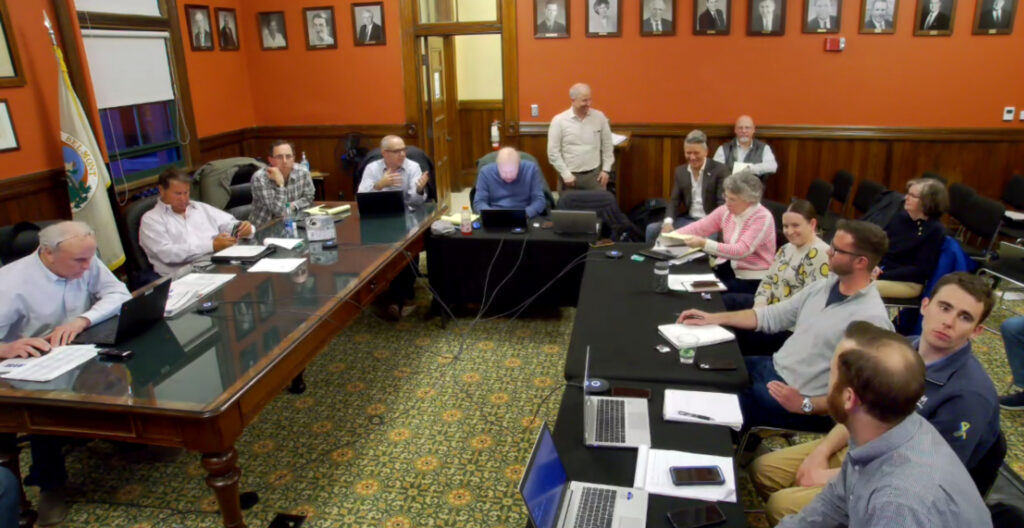Photo: The Purecoat North site which the owner the Tosi family hopes to build 225 apartment units on the three acre site adjacent Hittinger Street and Brighton Avenue.
The property owner of the Purecoat North Plating manufacturing site on Hittinger Street and a dog daycare business facing Brighton Street in east Belmont has presented to the town a preliminary design to redevelop the 126,726 square foot parcel into a 225 unit apartment complex with four floors of residential units above street level retail stores.
“I think we have a bonifide offer to proceed with a very major investment in Purecoat by the owner of Purecoat,” said Select Board member Roy Epstein. Under this redevelopment “scheme”, the property tax on the site will increase “by a factor of 10.”
While details – revealed at Monday’s Select Board meeting – remain vague, the Tosi family from Belmont who own the property approached Town officials in June with its plans to transform the three acre location into the largest mixed use development in Belmont’s history. In comparison, the Bradford complex in Cushing Square that opened in 2019 has half the number of units as what being proposed on Hittinger and Brighton streets.
One detail that has emerged is for two thirds of the complex, or 150 units, to be two-bedroom suites with the remaining units single bedrooms and studios.
More details are expected when the Planning Board meets on Tuesday, July 23.
The sites, currently occupied by Purecoat and the dog daycare business Crate Escape, are located adjacent the driveway to Belmont Middle and High School and across Hittinger from a residential neighborhood. The site also fronts Brighton Street at the corner with Flanders Road and runs along the commuter rail tracks.
The Tosi’s have told Epstein the project is conditional on being a by-right development, which means that the town’s planning staff or the Planning Board cannot deny the project as long as the proposal meets the criteria of the the Zoning Bylaw. While a by-right project means the project will require no waivers, special permits, or any other approvals, it’s still required to go through the normal development processes including Site Plan Review and the regular building permitting approvals.
The parcels are zoned as “General Business” which allow developer much greater leeway to build the complex they envision, a proposition that promoted Select Board Chair Elizabeth Dionne to say that the Tosi family “has the town over a barrel.” Dionne criticised the proposal as a long-term money loser for the town as it will increase the cost of town services, a jump in traffic, and an unknown increase in student enrollment in the public school district.
“No, we make money, this is cash-flow positive,” said Epstein.
It took Town Administrator Patrice Garvin to end the verbal tit for tat by saying the town is currently working with the Tosi family “to run some numbers” on the project’s revenue and expenses.
“We want to get the information to the Planning Board to really see what this project means,” said Garvin.
If the town or the Planning Board pushes back on the Tosi demands, the family is said to have made an old chestnut of a threat. “If it [isn’t] by-right, he’s making money [as a plating manufactor] and they’ll just leave it and nothing will happen,” said Epstein.
The parcels possible development is a blow to a number of town officials and residents who sees the location as a hub for commercial development. In fact, during its recent review of maps during the MBTA Communities Act discussion to determine areas to change zoning requirements to permit greater opportunities to develop multiunit housing, the Planning Board removed the Purecoat site for consideration for residential projects, replacing it with an area along Belmont Street near the Cambridge city line.
That decision by the Planning Board is being seen as one reason the Select Board in a 2-1 decision not to reappoint Planning Board Chair Jeffrey Birenbaum, to his role leading the five-member group, a move that surprised many in town.
In the past decade and a half, the town had been interested in the property for various projects. The Tosi family rejected a $6 million offer in 2011 to allow the construction of a Belmont Light substation. The station would eventually end up on Flanders Road. In 2019, a 60-day negotiation period between the town and the Tosi family failed to secure the ownership of the property or create an easement to allow the community bike path to run along the south side of the tracks. The path is now proceeding along the northside of the commuter line.
